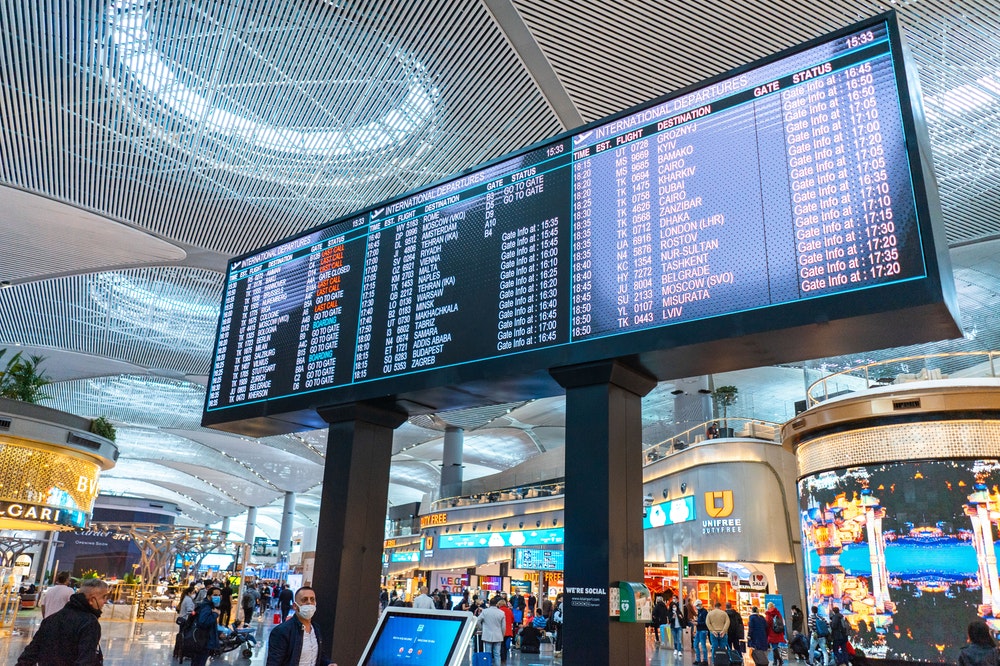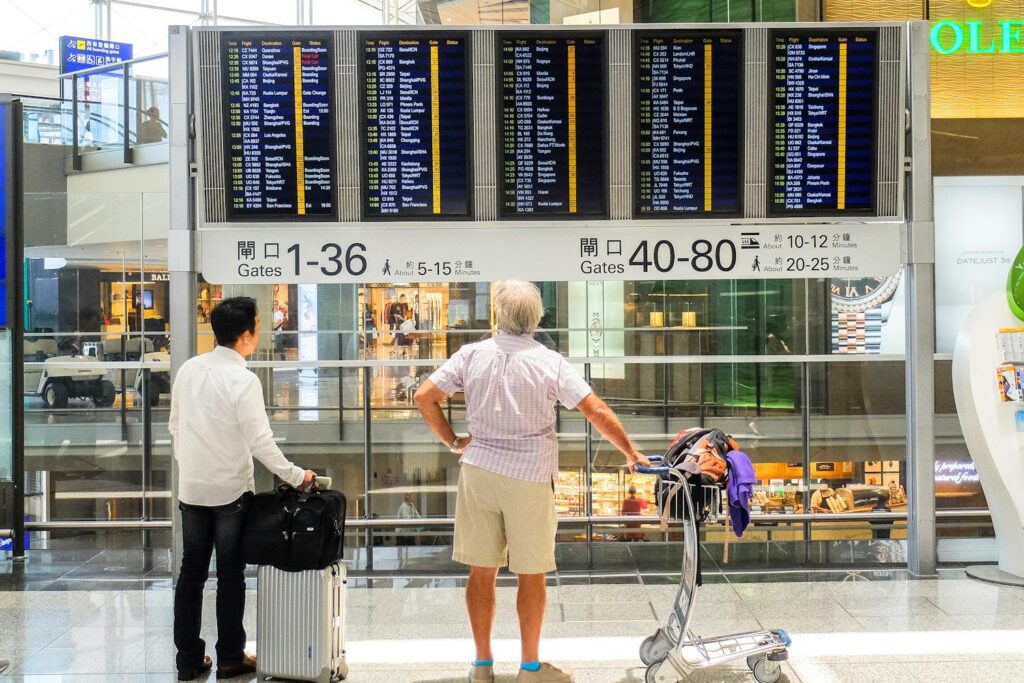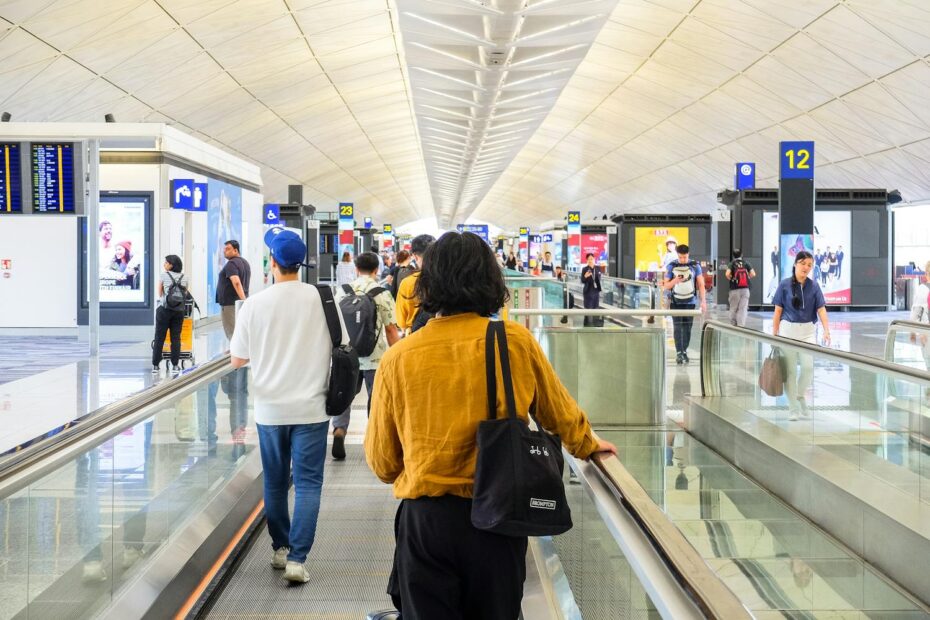Transavia is a popular low-cost airline based in the Netherlands, offering affordable flights across Europe as well as to select destinations in the Middle East and North Africa.
However, many travelers wonder whether a Transavia connection is available and how transfers work when booking with this airline. Transavia does not offer traditional, protected connecting flights, so most connections are self-transfers. That said, some Transavia self-transfers can still be protected through special services, depending on how you book.
Read on to learn everything you need to know about making a Transavia connection safely and efficiently.
Check your compensation online.
Does Transavia Offer Connecting Flights?
Officially, no — Transavia does not operate traditional connecting flights.
All Transavia tickets are sold as point-to-point journeys, meaning each flight is booked separately. Unlike full-service airlines, Transavia does not sell protected connections where the airline guarantees your onward flight if the first one is delayed and you miss your connection.
However, you can create your own Transavia connection by booking separate Transavia flights (or Transavia + other airline flights) through a hub airport such as:
- Amsterdam (AMS)
- Eindhoven (EIN)
- Rotterdam/The Hague (RTM)
- Brussels Airport (BRU)
These are known as Transavia self-transfers and come with different risks and responsibilities.
Baggage Rules on Transavia Connections
Since Transavia flights are usually separate bookings:
- Checked luggage is not transferred automatically
- You must pick up your baggage and recheck it
- Each flight follows its own baggage policy and fees
Traveling with hand luggage only is the safest option when self-connecting with Transavia.
The same applies if you have booked a Transavia + other airline connection.
Check-In Rules on Transavia Connections
Check-in must be completed separately for each flight and with each airline.
Before your first flight, you check in as usual with the operating airline (online, via app, or at the airport). After landing, you must exit the secure area, collect your checked baggage (if any), and then check in again for your next flight. You will also need to go through security and passport control again, depending on the airport and route.
If your second airline allows online check-in, you may be able to check in in advance using that airline’s website or app. However, even with online check-in, you may still need to visit the check-in desk to recheck your baggage.
Because each flight is independent, missing the check-in deadline for your next flight can result in losing that ticket.
Missing a Transavia connecting flight can result in buying a new ticket at your own expense if the flights were booked separately.
Transavia Smart Connect & Dohop: The Protected Transavia Self-Transfer
Even though Transavia does not offer traditional connecting flights, there is a protected self-transfer option called Transavia Smart Connect, powered by Dohop, which you can book directly through the Smart Connect service.
This system allows you to combine Transavia flights with other airlines to reach destinations not available on a single direct route.
Dohop manages the booking using a “virtual interlining” system, and you receive separate booking confirmations for each flight along with one overall trip summary.
While each leg is still a separate flight—meaning you must check in again and recheck your baggage—Smart Connect offers optional protection. If your first flight is delayed or cancelled, Dohop helps rebook your next flight, and if no suitable alternative is available until the next day, they may cover a hotel and meals.
Even with this protection, it’s important to allow plenty of transfer time and plan your Transavia connection carefully, as these are still self-transfers rather than standard airline connections.
Is Transavia Smart Connect Free?
Transavia Smart Connect is not automatically included for free with every booking — it is an option you choose during the booking process when your route qualifies for it.
If your itinerary is eligible, Smart Connect is offered during the booking on Transavia’s website. The basic Smart Connect setup (linking separate flights) is usually included in the ticket price.
However, the Dohop connection protection (the guarantee) is an optional paid add-on. This is what covers you if you miss your connection due to a delay or cancellation.
If you do not add the guarantee, your connection remains an unprotected self-transfer, even if it was shown through Smart Connect.
Seats and Baggage on Transavia Smart Connect
Since a Transavia Smart Connect trip consists of separate flight segments, you must manage baggage and seat selection for each flight individually.
This means adding luggage and choosing seats separately for every airline involved in your journey.

Check your compensation online.
How Do Self-Transfers with Transavia Work?
When you book two or more Transavia and/or other airline flights separately to reach your final destination, here’s how it works:
- Each flight is treated as a separate contract.
- You must collect your baggage and recheck it (unless traveling with hand luggage only).
- You must go through security again.
- The second flight is not protected if the first one is delayed or cancelled. If you miss your second flight due to a delay on the first, Transavia is not obligated to rebook you for free because the flights are independent.
- If you book your itinerary through Transavia Smart Connect (powered by Dohop), your self-transfer may be protected in case of delays or cancellations. In that case, you can be rebooked on the next available flight at no extra cost. Even with this protection, you still need to check in separately for each flight and recheck your baggage, as the flights remain independent.
Minimum Connection Time: What’s Safe?
Because Transavia does not offer protected connections, you should always allow extra time between flights. Recommended minimum connection time:
- With hand luggage only: at least 3 hours, for smaller airports – 2 hours.
- With checked baggage: at least 4 hours
- International to domestic transfers: even longer, depending on passport control
Low-cost airlines operate on tight schedules, and short delays are common. A longer buffer greatly reduces the risk of missing your next flight.
A Transavia connecting flight is usually a self-transfer between separate tickets, unless the trip is booked with added protection through services like Smart Connect or Kiwi.com.
What Happens If You Miss a Connecting Flight with Transavia?
If you are not traveling on a Transavia Smart Connect itinerary and you miss your connection because your first Transavia flight was delayed or cancelled, you will usually need to purchase a new ticket at your own expense. In this case, Transavia is not obligated to rebook you for free, because the flights are treated as separate bookings. Any hotel accommodation, meals, or additional expenses must also be arranged and paid for by you.
- You typically must buy a new ticket at your own expense
- Transavia is not required to rebook you for free
You may still be entitled to EU261 flight compensation for the delayed first flight (if the delay was the airline’s fault and you arrived 3+ hours late), or a flight cancellation compensation (if the cancellation was the airline’s fault). But it’s only for the delayed/cancelled flight, not for the whole journey.
Important: Compensation for delay does not automatically cover the cost of a newly purchased connecting ticket.
What Happens If You Miss a Transavia Smart Connect Connection?
You are traveling on a Transavia Smart Connect.
If your Transavia flight is delayed or cancelled last-minute, you might be concerned about missing a connecting flight. No need to worry though, Transavia will rebook you on another flight free of charge. In addition to that, you may have a right to care.
Read more:
- Transavia missed connection compensation
- Transavia flight delay compensation
- Transavia flight cancellation compensation
Can You Get EU Flight Compensation for a Missed Smart Connect Connection?
Yes — but compensation is assessed per flight, not for the whole trip as one journey.
Because Smart Connect is a protected self-transfer made up of separate tickets, EU flight compensation is calculated separately for each flight, not based on your final destination across all segments.
This means:
- You can claim compensation for the delayed or cancelled flight that caused the miss, if:
- The delay at that flight’s destination was 3+ hours, or
- The flight was cancelled at short notice, and
- The cause was within the airline’s control.
- You cannot claim compensation for the second flight itself just because you missed it.
- There is no single “whole-trip” compensation like with traditional protected connections under one airline booking.

Check your compensation online.
Is It Safe to Book Self-Transfers with Transavia?
Self-transfers with Transavia can be safe if planned carefully, but they carry more risk than traditional connections. They are best suited for:
- Experienced travelers
- Passengers with long layovers
- Travelers with flexible schedules
- Hand-luggage-only trips
They are not recommended if you:
- Have tight schedules
- Are traveling with children
- Have important events to attend
- Carry checked baggage with short layovers
To reduce the risks of self-transfer flights, you can also choose the paid Dohop protection service when booking through Transavia Smart Connect. This optional guarantee adds an extra layer of security to your journey. If your first flight is delayed or cancelled and you miss your next flight, Dohop will help rebook you onto the next available flight at no extra cost. If no suitable alternative is available until the following day, the service may also cover hotel accommodation and meals.
While this does not turn your trip into a traditional protected connection, it significantly improves your protection compared to booking completely separate tickets on your own.
Other Protections for Self-Transfers: The Kiwi Guarantee
If you book your self-transfer flight through Kiwi.com, you may be covered by the Kiwi Guarantee, which works in a similar way to Dohop’s protection and is often the best option for self-transfers that involve different airlines.
When the guarantee applies and your first flight is delayed or cancelled causing you to miss your next flight, Kiwi will help rebook you on an alternative flight at no extra cost, or in some cases refund the unused portion of your journey. Depending on the situation, the Kiwi Guarantee may also cover accommodation and basic expenses if an overnight stay is required.
However, just like with Smart Connect, your flights are still separate bookings, so you must check in for each flight and recheck your baggage, and the level of protection depends on the exact ticket type you choose on Kiwi.com.
Keep in mind that the Kiwi Guarantee is not free—it is included only with specific ticket types and adds to the total booking price.
What About Self-Transfer Insurance?
Standard travel insurance may offer limited protection for self-transfer flights, but it does not automatically cover missed connections on separately booked tickets. Some insurance policies may reimburse extra accommodation costs, meals, or new flight tickets, but only if your policy specifically includes missed connection or trip disruption coverage.
Unlike Dohop or the Kiwi Guarantee, travel insurance does not rebook your flights for you—it usually works on a reimbursement basis, meaning you must pay upfront and then file a claim later. For this reason, travel insurance should be seen as a backup layer of protection, not a replacement for dedicated self-transfer guarantees.
A Transavia connection usually means a self-transfer between separate flights, unless you book your journey through a protected service like Smart Connect or Kiwi.com.
